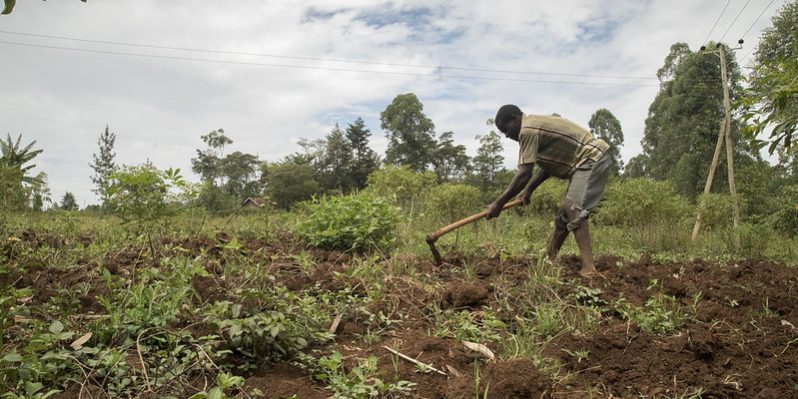Photo: Peter Kapuscinski / World Bank
Authors: Tatiana Segal, Raian Divanbeigi, Anita Okemini, Yiruo Li
Tajikistan is one of the least developed countries in Central Asia, with constraints to its development including fragility, conflict, and violence. Employment in Tajikistan is low, particularly for youth, women, and returning migrants. More than one in three young Tajiks finds themselves not in employment, education, or training (NEET), and a considerable gender gap exists in the labor force. These challenges are exacerbated in the GBAO and Khatlon regions, which border Afghanistan and face higher unemployment and lower incomes than the national average.
Agriculture has long been the primary source of jobs in rural Tajikistan, but tourism presents growing potential for employment as more international visitors have discovered the country’s snow-capped mountains and rich cultural heritage. While these two sectors are pivotal to providing opportunities for rural Tajiks, they face a common bottleneck: not enough values derived from the products or the resources. The Rural Economy Development Project (REDP) aimed to improve the source of livelihood in Tajikistan’s Gorno-Badakhshan Autonomous Oblast (GBAO) and Khatlon regions by targeting tourism and agriculture sectors.
In support of the project, the Supporting Effective Jobs Lending at Scale (SEJLS) program financed analyses of how agribusiness and tourism can generate jobs, facilitated investments in essential infrastructure, and developed local capacity, particularly for vulnerable populations. The grant also enabled the Ministry of Finance to enhance its monitoring and evaluation capacity through technical assistance. By 2022, the project had successfully and directly generated nearly 500 new jobs in the two rural areas, with 35% created for women. It is expected that around 7,000 jobs will be ultimately created by the project. The interventions have also reduced rates of NEET. Highlights from the project’s results in creating inclusive jobs:
- Infrastructure upgrades have provided direct job opportunities, especially for returning migrants. Construction has enhanced agribusiness infrastructure such as bazaars, food safety laboratories, and rehabilitation of tourist destinations. During the grant phase, the project has successfully installed tourism signage at 41 sites and initiated construction works at 3 cultural heritage sites. Construction work emerged as a key driver of job creation, offering labor-intensive employment opportunities that align with the skills of returning migrants, most of whom have experience in the sector.
- Local authorities note significant indirect job impacts in cross-border markets, which play a crucial role in connecting isolated rural communities to affordable products and economic opportunities. Facing a mean annual temperature as low as -6 °C in the GBAO region, traders endure harsh conditions when selling goods in the open air. REDP identified poor infrastructure as a critical bottleneck hindering cross-border trade in the Agrobusiness Sector Gap Analysis. Through facility upgrades, REDP has created more jobs for merchants directly involved in cross-border trade activities, generated positive spillover effects on local value chains, and supported services with additional employment for taxi drivers, transportation service providers, market support and administration personnel, security officers, and police officers. Moreover, REDP has proposed a virtual market initiative to transform trade activities. By facilitating information exchange, the initiative will increase market access for local small-scale producers, creating backward supply chain jobs during goods production.
- Youth and women built skills demanded by the tourism sector. As identified by the report supported by SEJLS, considerable skills gaps exist within Tajikistan’s tourism industry. In addition, the country’s rich craft heritage also has not been fully harnessed due to product quality and distribution challenges. Addressing these shortcomings, SEJLS helped finance a new curriculum in high-demand skills, including English language and digital proficiency, Astro-tourism, handicrafts, construction, and how to be a tour guide. Equipping the younger generation and women with these valuable skills enhances their local tourism employment prospects. Moreover, this skill-building facilitates effective capitalization of increasing tourist arrivals by diversifying activities with higher value added.
- SEJLS prioritized inclusiveness by promoting better jobs in sectors with high participation by women.Tajik women are at the forefront of tourism, managing most guesthouses and homestays. Inadequate sanitation facilities in the GBAO and Khatlon regions, however, are a deterrent for tourists; analysis conducted by REDP reveals that more than half of potential guests refuse accommodation in guesthouses due to poor sanitation. To address this issue, the SEJLS grant provided resources to develop technical requirements for modular sanitation kits fully compliant with national standards and available for immediate purchase and installation from verified suppliers, with 50 homestays and guesthouses expected to benefit directly. These upgrades enable local accommodations to attract affluent tourists who spend more during their stays, generating more income for the women operating these establishments. Furthermore, the project’s commitment to gender prioritization is evident in its tourism training, where almost half of the beneficiaries are women. Finally, investments made in sanitary services at bazaars have improved public hygiene and facilitated women’s employment in these spaces.
With support from SEJLS, the project demonstrates how to generate inclusive jobs in rural areas while addressing the binding constraints in the tourism and agriculture sectors. Over the long run, workers in the agriculture sector, particularly those from vulnerable populations, continue to reap the benefits of improved technology and trade environment made possible through SEJLS funding. Investment in human capital facilitated by SEJLS empowers women and youth and unlocks promising job prospects for them.
This is part of a series of blogs sharing insights from activities funded by SEJLS to support WBG operations in maximizing their impact on jobs. The next blogs will present lessons from other projects supported by SEJLS across several sectors of intervention.




